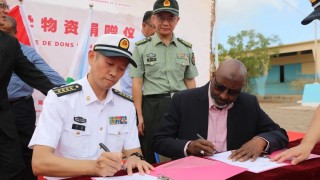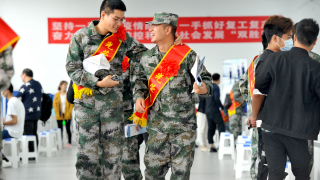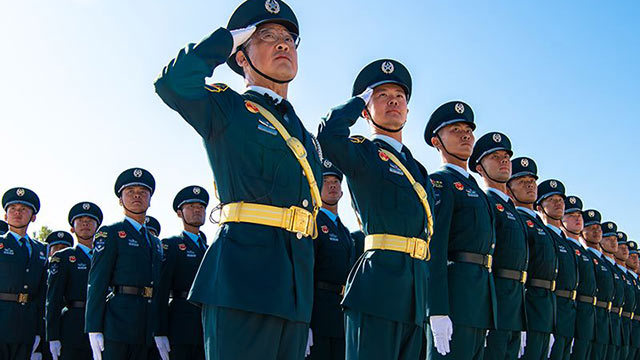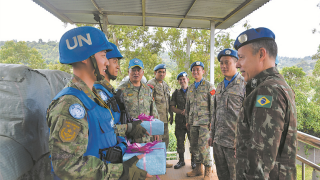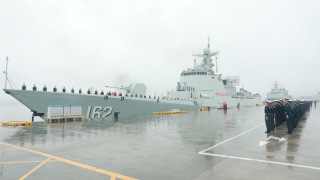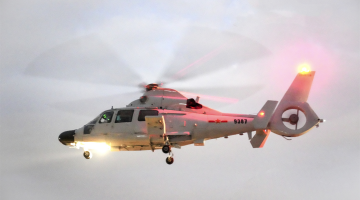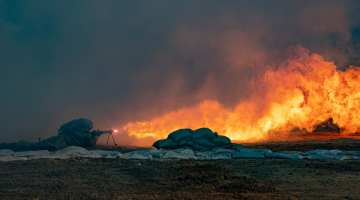
By Zhou An
According to US media reports, recent satellite images show that the US military is expanding the Tinian International Airport in the Western Pacific Ocean on a large scale. Analysts believe that the expanded airport is likely to be used by the US military as a backup facility to Guam’s Andersen Air Force Base to support the US expansion and strengthening of military deployment in the Western Pacific region.
Tinian is one of the four constituent municipalities of the Commonwealth of the Northern Mariana Islands (the overseas autonomous states of America). It is situated east of the Philippines, south of Japan, and north of Guam. With an area of 102 square kilometers, the island is the third largest of the Mariana Islands in the Western Pacific Ocean.
Before World War II, Tinian was controlled by Japan. After the US military occupied the island in 1944, a US air base capable of having B-29 bombers take off and land was established. The Allied forces took the opportunity to launch steady long-range bombing of the Philippines, the Ryukyu Islands and Japan, thus promoting a major change in the situation of the Pacific Theater during World War II. In 1945, the two atomic bombs dropped by the US military on Hiroshima and Nagasaki were also uploaded on Tinian.
With the end of World War II, the focus of US military deployment shifted to Guam, south of Tinian. Guam's Anderson Air Force Base has become the command center and the most important forward base of the US Strategic Air Command (SAC) in the Western Pacific Ocean, and ever since the Air Force base on Tinian was gradually abandoned. In 2003, the US military returned to Tinian and repaired the airport thereon, making Tinian a training base for the US military. At the end of 2016, the US military began to expand the Tinian International Airport and has been increasing the pace of expansion recently.
Tinian located near Guam, less than 3000 kilometers away from Northeast Asia and Southeast Asia, is geostrategically significant. According to the US military's assumption, once the Anderson Air Force Base on Guam is unavailable due to an attack or natural disaster, the Tinian International Airport is to provide support for those aircraft diverted. By improving the infrastructure and military facilities on the island, it is also possible to build a base on the island that can accommodate troops of temporary deployment and launch military attacks.
However, the US military's expansion of the Tinian International Airport and resumption of the Tinian air base have met with resistance and opposition from the local people. As reported by the US media, the environmental protection department of Tinian has warned that the US military exercises on the island might cause aquifer pollution and damage coral reefs. Local people have also shown great concern that the continuous expansion may deliver a severe unfavorable effect on the development of animal husbandry and tourism therein.
At the same time, the island has been shrouded in painful memories of the war. According to some islanders, there are still old tanks and cannons left from World War II on the island, and the older generation has still been incapable of getting rid of war trauma though the war had passed for many years. After the upgrade, the Tinian International Airport can accommodate 12 aerial tankers and have about 8-week military exercises each year as planned for the expansion. At that time, the roar of fighter jets is sure to bring the islanders into the fear of war again.
Restarting the US Air Force base on Tinian is another move taken by the US military to strengthen its military presence in the Western Pacific Ocean and promote its distributed strikes and agile combat deployment (ACE). In addition to Tinian, the US Air Force bases on Saipan and Wake Island are also under intensive expansion. It is expected that after the expansion, bases on Guam, Tinian, Saipan, Wake Island and Hawaii will form an island-based basegroup that can take concerted action and have a certain depth, turning to be the "super military base" of the US military in the Western Pacific Ocean.
Analysts pointed out that the US, with its deep-rooted Cold War mentality and hegemonic ideology, has continued to expand its island-based bases in the Western Pacific Ocean to strengthen its military presence, which would have a negative impact on regional peace and stability.
(The author is a scholar of international issues.)
